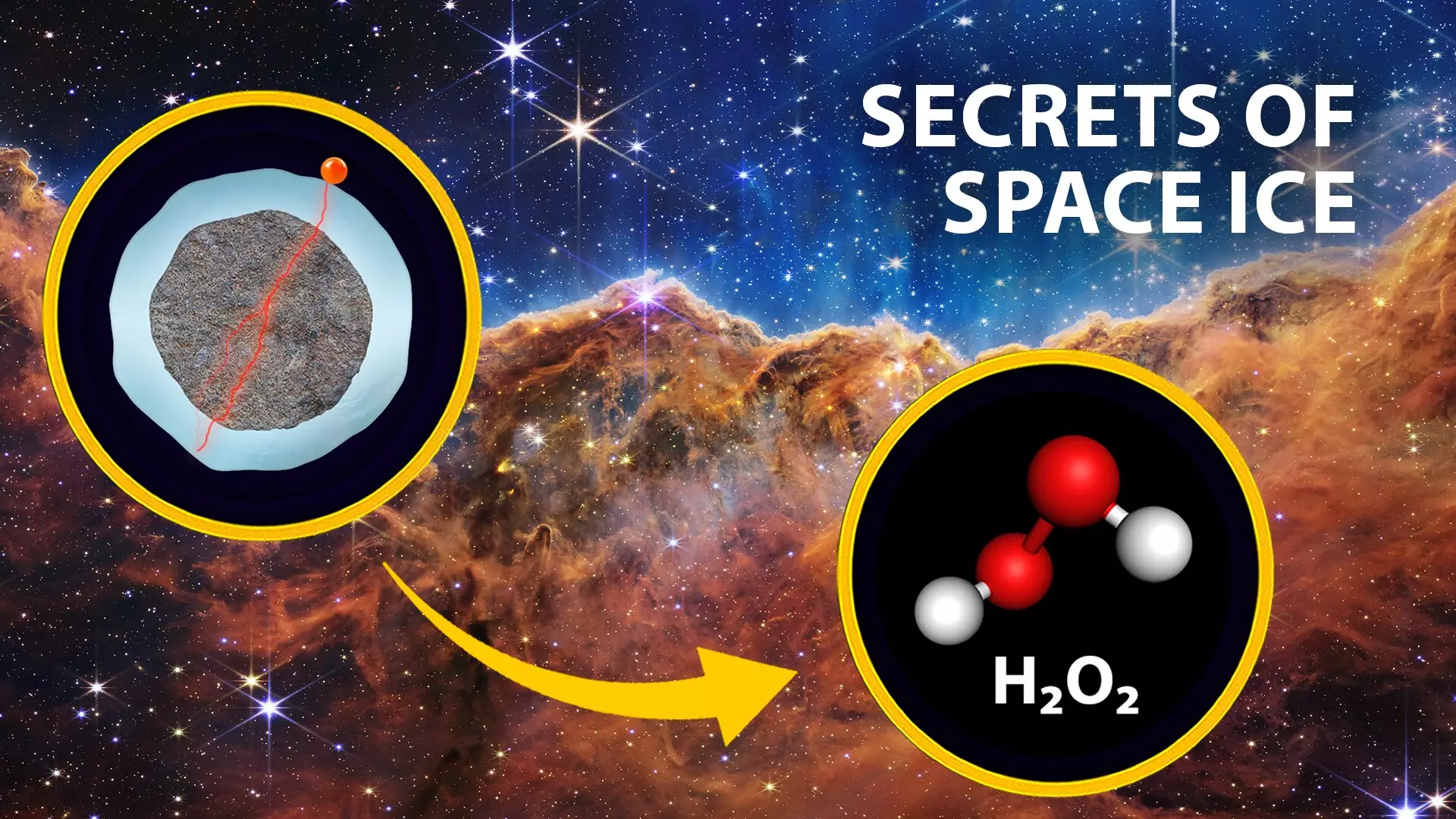The question of who we are and how we came to exist is a profound one that has sparked fascination and inquiry across ages and cultures. At the heart of this existential puzzle lies a scientific investigation into the origins of life—an exploration that sees humanity as a product of cosmic events, a concept beautifully reflected in Crosby, Stills, Nash & Young’s iconic song, suggesting that we are all made of stardust. Current research is pivoting toward understanding the processes through which prebiotic molecules—the building blocks of life—could have formed in the icy expanses of space, influenced predominantly by low-energy electrons resulting from cosmic radiation.
A groundbreaking study spearheaded by undergraduate researcher Kennedy Barnes and her colleague, Rong Wu, at Wellesley College, has revealed intriguing insights into the role of low-energy electrons versus photons in the synthesis of prebiotic molecules. Under the guidance of esteemed professors Christopher Arumainayagam and James Battat, the research team has aimed to unearth the relative significance of these two agents in catalyzing chemical reactions in extraterrestrial environments. This investigation aligns with a history of scientific curiosity dating back over a century, tracing back to pioneer Annie Jump Cannon, who first identified molecules in space.
Adopting a comparative approach, Barnes highlights a noticeable discrepancy in the prevalence of low-energy electrons and photons within cosmic settings. The findings suggest that cosmic-ray-induced electrons could greatly outnumber the photons affecting cosmic ice, positing that these electrons may play a dominant role in the generation of prebiotic molecules. This paradigm shift challenges previous assumptions that photons and electrons have comparable influences on extraterrestrial chemical processes.
While the research is primarily concerned with the esoteric nature of cosmic chemistry, it harbors significant implications for life on Earth as well. The study of low-energy electrons is not confined to the cold expanse of space; it extends into the realm of environmental studies and medical applications. Recent investigations into water radiolysis—the process by which water molecules break down under exposure to radiation—have unveiled the production of reactive substances like hydrogen peroxide and hydroperoxyl radicals. These compounds pose threats to the ozone layer and could have detrimental effects on biological tissues, underscoring the necessity of understanding these reactions in relation to both environmental safety and human health.
For instance, the principles learned through these studies may inform cancer treatment approaches that utilize high-energy radiation, thereby enhancing therapeutic efficacy while minimizing collateral damage to healthy cells. Furthermore, in the context of environmental remediation, low-energy electrons generated through high-energy radiation may be instrumental in breaking down hazardous pollutants in wastewater, showcasing a direct connection between cosmic chemistry and practical Earth-centric applications.
The researchers employed advanced laboratory techniques to simulate cosmic conditions and test their hypotheses surrounding prebiotic molecule synthesis. Using an ultrahigh-vacuum chamber designed to mimic space-like environments, and equipped with technologies such as electron guns and laser-driven plasma lamps, the team bombarded nanoscale ice films with low-energy electrons and photons. This not only rendered their findings more robust but also allowed for a practical examination of the conditions that govern molecular interactions in the cosmos.
Barnes emphasizes the broader relevance of their work, reference to celestial bodies like Europa, one of Jupiter’s moons, which is encapsulated in a thick layer of ice. Insights gleaned from their experiments could potentially illuminate data collected by contemporary space exploration missions, including NASA’s James Webb Space Telescope and the forthcoming Europa Clipper mission, slated for launch in October 2024. These missions aim to search for signs of life beyond Earth and to study the chemical processes that prevail in extraterrestrial ice structures.
The promising prospects of this research beckon other scholars to integrate low-energy electrons into their astrophysical models, potentially revolutionizing our comprehension of the chemical foundations of life beyond Earth. Collaborations with international research colleagues further enhance the scope of this inquiry, with teams exploring various molecular compositions of ice films to delve deeper into prebiotic chemistry. Barnes expresses optimism regarding the revelations this line of research might disclose, likening the current scientific climate to the dawn of a new Space Age.
As humanity’s quest for knowledge expands beyond the confines of our planet, the relationships drawn between cosmic chemistry and terrestrial phenomena reinforce an essential narrative: that understanding the universe is interwoven with insights about our biological and ecological existence on Earth. This fusion of cosmic exploration and practical applications establishes a profound dialogue about our origins, ultimately enriching our quest for connection to the universe and each other.


Leave a Reply